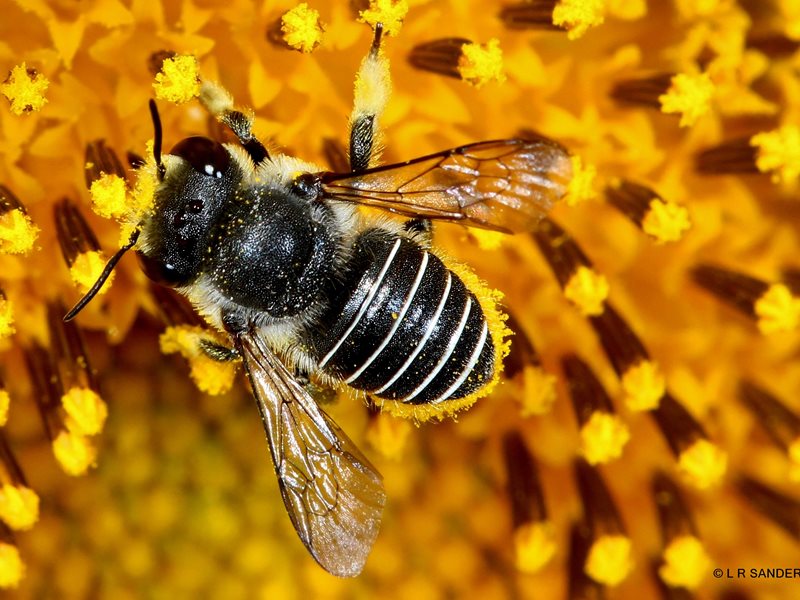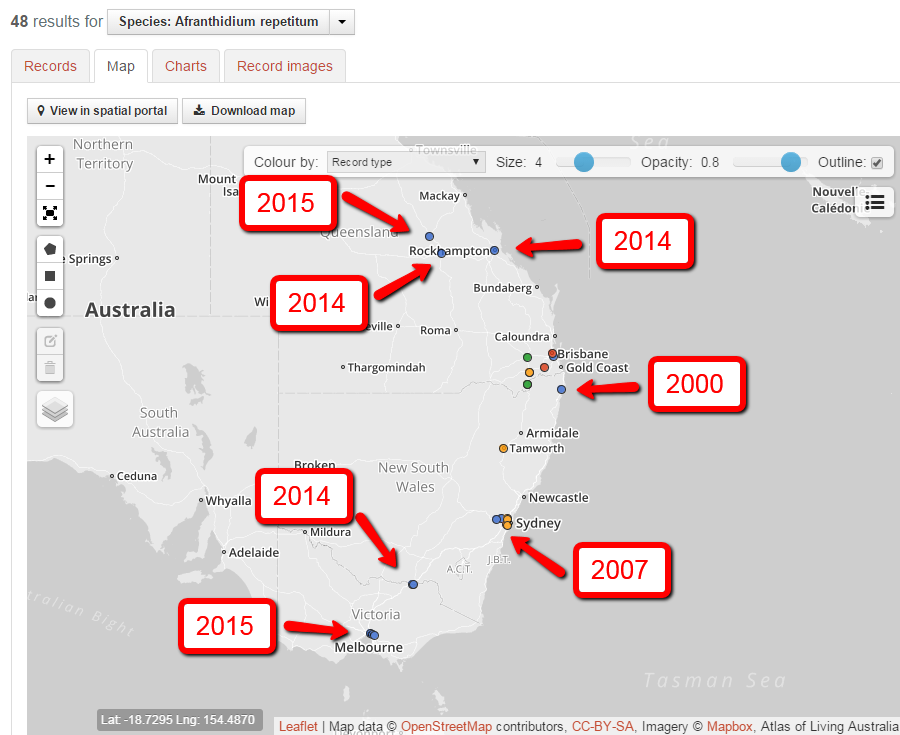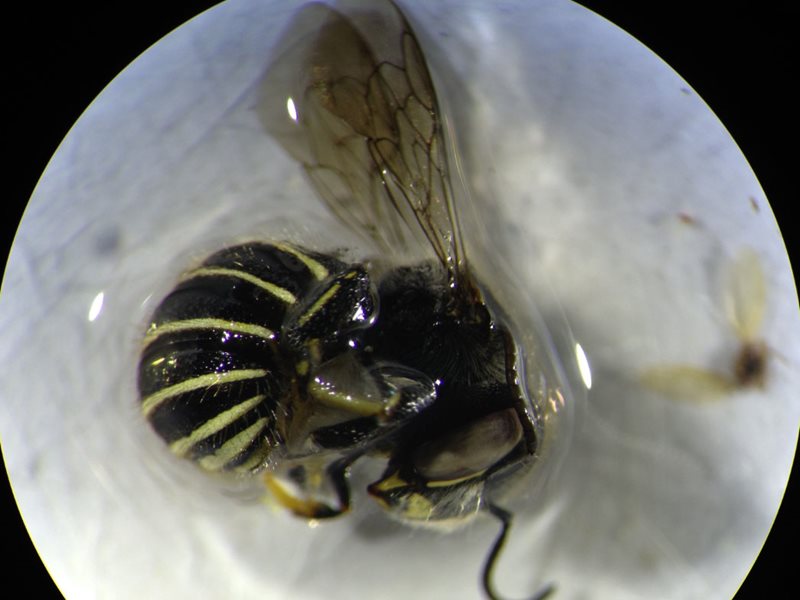Australian Citizen Scientists are busy (like bees!) documenting the spread of an exotic and invasive South African carder bee, Afranthidium Immanthidium repetitum. Through the great work of the BowerBird community, the Atlas of Living Australia has learnt that the known distribution for this species has increased significantly. From what was first recorded in Brisbane in 2000, Sydney in 2007, and recent records in Rockhampton and Albury lodged in late 2014.

Sadly, Ken Walker from the Victoria Museum has now confirmed a new sighting for the species: in Victoria. The species has well and truly crossed the state borders, and human transportation is the most likely cause for its spread, as explained in this Queensland Museum fact sheet.

The sighted bee was captured, recorded, and uploaded by a member of the public to the BowerBird website for identification on December 8 2014, from the suburb of Kew in Victoria.
The initial image of the male specimen was taken in alcohol, looking down one eyepiece of a microscope with an iPhone – an impressive photograph and certainly good enough for species identification (as there is no native megachilid bee in Australia with these distinctive yellow colour markings). The photographed specimen is now in the collection of Museum Victoria.

Unlike many other megachilid bee species, this bee does not nest in the ground or in wooden holes, but rather it makes a “cotton-ball like” free standing nest from “hairs” it gathers from plant leaves and forms its nest inside sheltered locations such as wooden boxes or window frames: making them a perfect candidate for human transportation.
Citizen Science is a very important source of data for Australian biodiversity knowledge. Data and insights gained through the efforts of everyday spotters can be as valuable as that obtained by scientists working in academia, natural history collections, government agencies and business. The new sightings of invasive pests uploaded by citizen scientists are a perfect example of how public knowledge and experiences with the environment around them can assist with issues of national importance, such as biosecurity.
BowerBird is supported by the Atlas of Living Australia and Museum Victoria. Records provided to and identified by BowerBird users are uploaded to the Atlas of Living Australia each week.